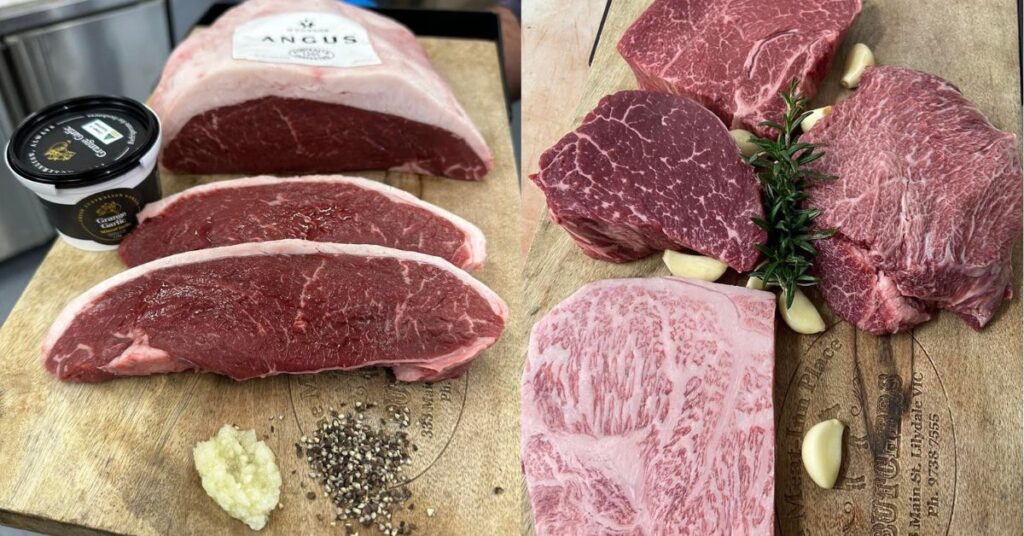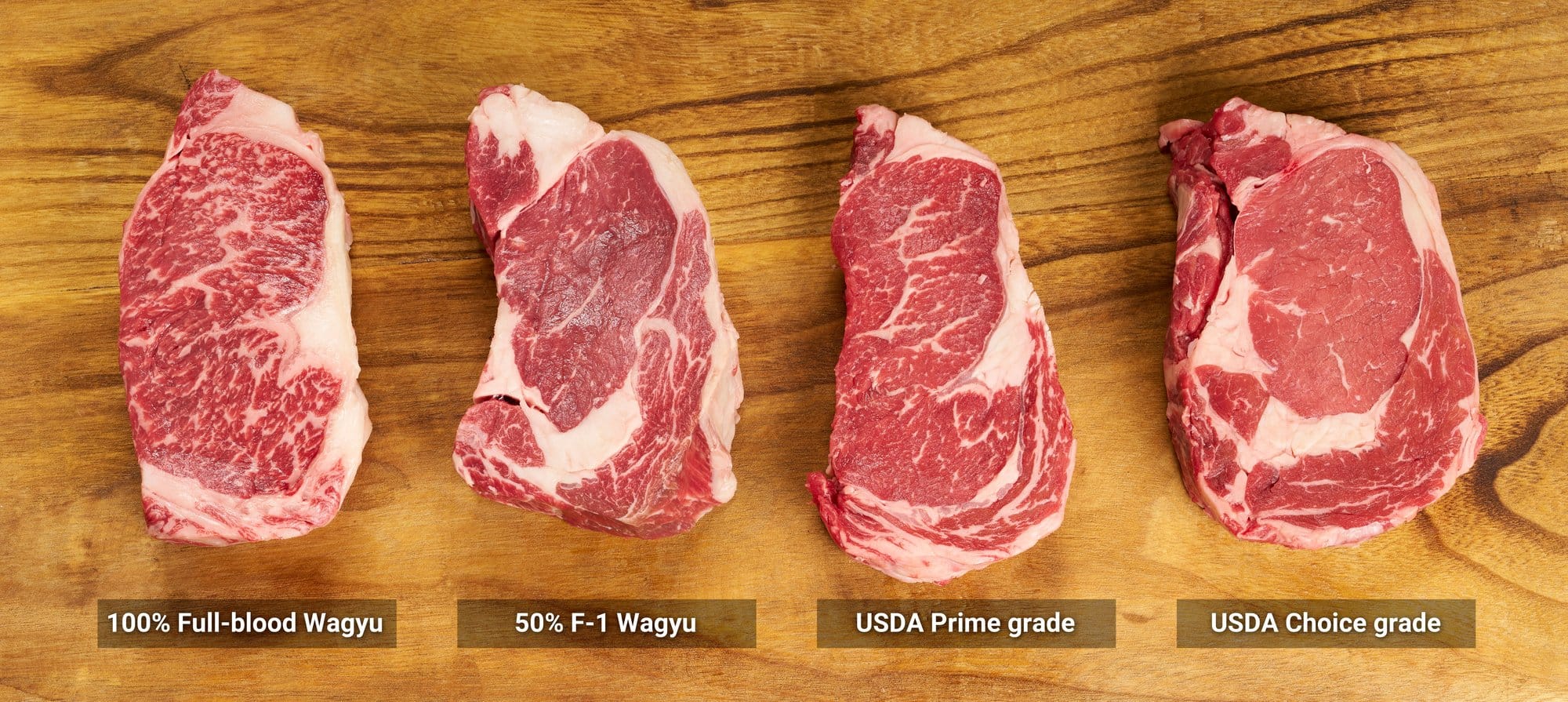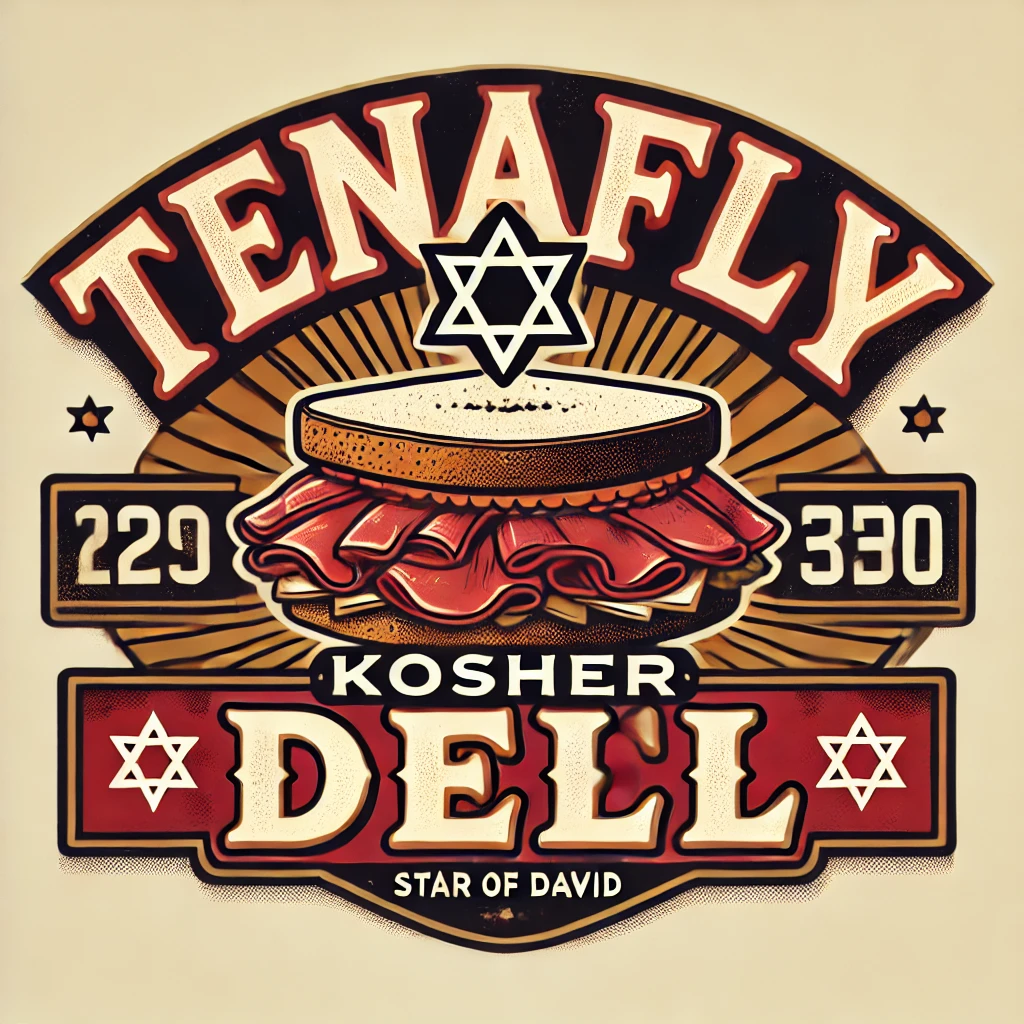
Wagyu and Angus beef differ primarily in origin, marbling, and flavor profile. Wagyu, originating from Japan, features exceptional marbling that creates a buttery texture and rich flavor. Angus, developed in Scotland, offers good marbling with a robust beefy taste at a more accessible price point. Choose Wagyu for special occasions when premium quality justifies the higher cost, and select Angus for everyday meals that still deliver excellent flavor and tenderness.
| Characteristic | Wagyu Beef | Angus Beef |
|---|---|---|
| Origin | Japan | Scotland |
| Marbling | Exceptional (BMS 6-12) | Good (BMS 2-5) |
| Flavor Profile | Buttery, rich umami | Robust, traditional beef flavor |
| Texture | Extremely tender, melts in mouth | Tender with more chew |
| Price Range | $75-$200+ per pound | $10-$30 per pound |
| Best Uses | Special occasions, simple preparations | Everyday meals, versatile cooking methods |
Wagyu vs Angus Cattle Overview
A Quick Look at Wagyu and Angus History
Wagyu and Angus cattle both have fascinating histories that shape the delicious beef we enjoy today.
- Wagyu: This breed started in Japan back in the early 1600s and the name actually means “Japanese cow.” Japanese farmers took great care in breeding these cattle to get that amazing marbling which makes Wagyu beef incredibly tender. They’ve always made sure these cows had high-protein diets and treated them kindly to ensure top-notch meat quality.
- Angus: On the flip side, Angus cattle come from northeastern Scotland, tracing their roots back to local black cattle. They became really popular in the 19th century when they made their way to the United States. Their durability and great flavor have really influenced the American beef scene. Unlike Wagyu, Angus beef isn’t specially bred for marbling, so it’s robust in flavor but has a different texture.
In the end, both breeds are a testament to the love and care of their farmers over the years, making them both top picks for high-quality beef in the culinary world.
Where Wagyu and Angus Cattle Come From
Knowing where these cattle come from can give us insights into their unique traits.
- Wagyu Cattle: Mainly found in Japan, especially in places like Hyogo Prefecture, Wagyu’s ability to thrive comes from the local climate and land. Strict breeding and farming rules to keep it authentic really make Japanese Wagyu stand out.
- Angus Cattle: Angus cattle started in the green fields of northeastern Scotland and now do well on ranches in the U.S. where the environment supports their muscular growth and tasty meat.
Both breeds owe their high quality to their regions, making them unique players in the beef market.

Wagyu vs Angus Meat: A Comparison
Differences in Marbling and Fat Content
When comparing Wagyu and Angus meat, you’ve got to talk about the big differences in marbling and fat.
- Wagyu: This beef is famous for its amazing marbling which features thin veins of fat running through the muscle. That marbling not only gives Wagyu its tender, buttery bite but also adds to its rich flavor. A 4-ounce piece of Wagyu typically has around 14 grams of fat, mostly healthy monounsaturated fats, which are better for you and help it melt in your mouth.
- Angus: Angus beef is tasty too, but it tends to have less marbling than Wagyu. Instead of being mixed throughout, the fat in Angus usually hangs out on the edges of the cut. A 4-ounce serving usually contains about 18.7 grams of fat, making it richer overall, but it cooks up a bit differently in terms of texture and taste.
So while both are sought after for their unique qualities, Wagyu’s marbling gives it a tenderness that Angus can’t quite compete with.
The Flavor and Texture Showdown
Now let’s chat about the delightful differences in flavor and texture.
- Wagyu: The rich buttery taste of Wagyu comes from its marbling, which ups both the flavor and that luxurious velvety texture. When you have a bite, the fat melts beautifully, showering your taste buds with all sorts of amazing flavors—great for those fancy dinners or when you just want to treat yourself.
- Angus: In contrast, Angus beef has that classic hearty beefy flavor we all love. It’s got a meaty character that makes it perfect for things like burgers and steaks. Even though it might not be as tender as Wagyu, it’s satisfying with a good chew that beef lovers enjoy.
When it comes down to it, choosing between Wagyu and Angus often comes down to what you like: the rich tenderness of Wagyu or the strong fulfilling flavors of Angus. Whether it’s a special occasion or a weeknight dinner, each type brings something unique to the table.

Nutritional Value and Health Benefits
Omega-3 and Omega-6 Content
When looking at the health benefits of Wagyu and Angus, one big difference is in their fatty acid profiles.
- Wagyu Beef: Not only does Wagyu have that incredible marbling but it’s also packed with good fatty acids. It has a higher concentration of monounsaturated fats which means more omega-3 and omega-6 fatty acids compared to Angus. These healthy fats help promote heart health and lower cholesterol levels.
- Angus Beef: Angus does have some omega-3 and omega-6 fats, but it’s generally leaner with less fat overall. For those looking to cut back on fat but still enjoy tasty beef, Angus fits the bill. Just keep in mind it might not offer the same heart-healthy perks that Wagyu does.
Diversifying your meat choices can lead to a balanced diet, letting you take advantage of the health benefits each type of beef brings.
Vitamins and Minerals
Wagyu and Angus aren’t just delicious; they’re also filled with important nutrients our bodies need.
- Wagyu Beef: Besides being full of healthy fats, Wagyu is rich in crucial vitamins and minerals. A serving can include:
- Vitamin B12: Important for making red blood cells and keeping nerves healthy.
- Zinc: Key for immune health and making DNA.
- Angus Beef: Angus also offers great nutrition with:
- Iron: Vital for transporting oxygen in the blood.
- Niacin: Helps with metabolism and keeps your skin healthy.
Whichever you go for—whether it’s the rich and buttery Wagyu or the flavorful Angus—you’ll be adding important nutrients to your diet and enjoying tasty meals.
Price and Availability
Cost Difference Between Wagyu and Angus
When it comes to picking between Wagyu and Angus, price really matters.
- Wagyu Beef: Known for being top-tier, Wagyu has a pretty high price. The rarity of pure Japanese Wagyu and the careful breeding habits mean prices can be from $120 to $300 per pound. With its amazing marbling and tenderness, many folks see it as a real luxury for special occasions.
- Angus Beef: On the other hand, Angus is way more affordable. Prices usually vary from $2 to $4 per pound, making it a regular go-to for everyday meals. Even at a cheaper price, Angus still delivers fantastic flavor and quality—great value for beef lovers without denting the wallet.
Altogether, the cost difference comes from the unique breeding methods and scarcity of Wagyu, making it more of a treat compared to everyday fare.
Accessibility in the Market
Beyond price, how easy it is to find both types of beef is also key in making your choice.
- Wagyu Availability: While you might find Wagyu at fancy restaurants or in specialty butcher shops, pure Japanese Wagyu is pretty scarce in regular grocery stores. Many gourmet markets offer American Wagyu which is easier to get than the imported version.
- Angus Availability: In contrast, Angus beef is super easy to find and available across supermarkets in the U.S. Its popularity means you can grab various cuts of Angus at your local store or butcher.
This ease of finding Angus makes it a solid choice for everyday cooking, whereas Wagyu is something special for when you want to elevate your dining experience. No matter what you pick, both have their distinct flavors and culinary adventures.

Cooking Methods and Techniques
How to Cook Wagyu Beef
Cooking Wagyu is an experience, and you want to treat it right to keep all its amazing qualities intact.
- Low and Slow: Since it has lots of marbling, you want to cook Wagyu at low to medium heat. This lets the fat render smoothly without flare-ups. Some good methods include:
- Pan-Searing: Use a heavy skillet and let the steak sizzle lightly. Sear each side for about 1-2 minutes to develop a crust, then lower the heat to finish cooking.
- Grilling: If you’re using a grill, make sure it’s preheated to medium to ensure even cooking.
- Simple Seasoning: With Wagyu being so flavorful, just a sprinkle of salt and pepper often does the trick without overpowering its natural taste.
- Resting Time: After cooking, let the steak rest for 5-10 minutes. This helps the juices settle, making each bite just as juicy as the last.
How to Cook Angus Beef
While Angus beef is robust in flavor, it also needs some special techniques to cook it just right.
- High Heat Searing: Angus shines with high-heat cooking methods that create a nice crust while keeping the inside juicy. Some top methods include:
- Grilling or Broiling: Preheat the grill well for a good sear. For thicker pieces, think about using reverse sear—start low and finish with high heat for that great caramelization.
- Generous Seasoning: Angus can take on hearty seasoning really well, so feel free to go with a mix of salt, black pepper, and maybe your favorite steak rub.
- Short Resting Time: Allow Angus steaks to rest for about 5 minutes after cooking. This stops too much juice from escaping while still keeping the flavor locked in.
Whether you’re making fancy Wagyu for a special occasion or quick Angus for a barbecue, these methods will help you get the best flavors and textures out of both!



Sustainability and Environmental Impact
Impact of Wagyu and Angus Farming on the Environment
As we dive into the worlds of Wagyu and Angus beef, it’s also important to look at how they affect the environment.
- Wagyu Farming: Raising Wagyu often involves intensive farming especially in Japan where the cattle get special care. They focus on top-quality feed and a stress-free environment, but this can sometimes lead to higher emissions due to how the feed is sourced and managed. Because of the detailed attention they need, Wagyu has a significant environmental footprint.
- Angus Farming: Meanwhile, Angus usually comes from more traditional farming setups, often in pasture-based systems. They adapt well to different climates, which can create varying environmental impacts based on how they’re raised.
So, these environmental considerations can really differ between the two breeds, affecting everything from resource use to carbon output.
Sustainable Practices in Beef Production
The beef industry is changing, and more producers are going sustainable to reduce their environmental impact.
- Wagyu Production: Some Wagyu farms are switching to more sustainable methods, like regenerative grazing which helps improve soil health and boost carbon capture. These practices are becoming more popular as ranchers see how important it is to keep things balanced.
- Angus Production: In the same way, many Angus farmers are adopting sustainable techniques. Practices like rotational grazing help keep pastures healthy and prevent overgrazing, making sure land can keep being used sustainably.
By focusing on sustainability, both Wagyu and Angus producers can help create a beef industry that’s better for the planet. Consumers who want to make a positive impact should look for beef from farms that prioritize sustainable practices, enjoying their meals while caring for the environment.


Frequently Asked Questions About Wagyu and Angus Beef
Is Wagyu beef worth the higher price compared to Angus?
Wagyu beef commands a premium price because of its exceptional marbling, tenderness, and flavor profile. For special occasions or culinary experiences, many consider the unique buttery texture and rich taste worth the investment. However, for everyday meals, high-quality Angus provides excellent flavor and value. The “worth” ultimately depends on your preferences, budget, and the specific dining experience you desire.
What cooking methods are best for Wagyu versus Angus beef?
For Wagyu, simple preparation methods that highlight its natural flavors work best—medium-rare to medium doneness using high-heat cooking methods like pan-searing or grilling for a short duration. Angus beef is more versatile; it performs well with various cooking techniques including grilling, broiling, roasting, and braising, standing up to stronger marinades and seasonings while maintaining its robust beef flavor.
Can American Wagyu compare to authentic Japanese Wagyu?
American Wagyu is typically a crossbreed between Japanese Wagyu cattle and Angus cattle, resulting in beef with higher marbling than typical Angus but less than authentic Japanese Wagyu. This creates a “best of both worlds” product with some of Wagyu’s buttery texture and Angus’s beefy flavor. While not identical to Japanese Wagyu (which follows strict breeding standards), American Wagyu offers an excellent premium option at a relatively lower price point than imported Japanese Wagyu.
Is kosher Wagyu or Angus beef available?
Yes, both Wagyu and Angus beef can be processed according to kosher standards. Kosher Angus is more widely available and affordable, while kosher Wagyu is a specialty product with limited availability. At Tenafly Kosher Deli, we offer select cuts of kosher Angus beef regularly and can special order kosher Wagyu with advance notice for customers seeking this premium experience while maintaining kosher dietary requirements.
How can I identify quality Wagyu and Angus beef when shopping?
For Wagyu, look for visible, abundant marbling throughout the meat with a BMS (Beef Marbling Score) rating if available. Authentic Japanese Wagyu typically comes with a certificate of authenticity. For Angus beef, look for the “Certified Angus Beef” label which ensures the meat meets ten quality standards, including moderate to abundant marbling, and a consistent, medium to fine texture. The color should be bright cherry-red for both types, indicating freshness.
Final Thoughts: Choosing Wagyu or Angus
Things to Think About Before Deciding
When picking between Wagyu and Angus, there are a few key things to think about:
- Budget: Wagyu is often pricier due to how rare it is and the intensive farming involved. If budget is a big deal for you, Angus might be the way to go since it’s way more accessible.
- Cooking Methods: Think about how you want to cook. If you’re after a melt-in-your-mouth experience, Wagyu is perfect. But if you’re looking for versatility to grill steak or make burgers, Angus fits the bill just right.
- Occasion: Context matters! If you’re planning something special, Wagyu can really elevate that experience. For casual meals or weeknight dinners, Angus delivers great flavor without being heavy on the wallet.
Personal Taste and Cooking Style
At the end of the day, your personal taste will guide your choice.
- Flavor Preferences: If you crave a rich buttery taste that sticks with you, Wagyu will probably be your go-to. On the other hand, if you’re more about that hearty beef flavor, Angus will hit the spot.
- Texture Preferences: If you like a tender melt-in-your-mouth bite, you might lean towards Wagyu while if you enjoy a firmer chew, Angus could be a better fit.
In the end whether you lean towards the richness of Wagyu or the classic taste of Angus, you’re in for a treat. Why not enjoy both and see what each has to offer?

A Bergen County institution celebrating authentic Jewish cuisine since 1985. Our pastrami—brined for 14 days, smoked over applewood for 12 hours, and steamed to perfection—creates a melt-in-your-mouth experience that rivals Manhattan’s finest delis. Our rye bread is baked fresh daily using a century-old recipe from Poland. Featured in Food & Wine’s “Top 10 Delicatessens in America” and on Food Network’s “Best Thing I Ever Ate.” Chef Moshe Greenbaum, a third-generation deli master trained at the Culinary Institute of America, ensures every sandwich meets our exacting standards. No wonder our customers drive from three states away.
Leave a Reply